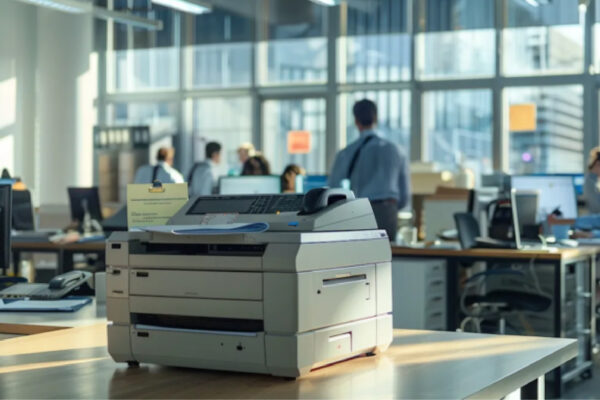The automotive industry is going through a paradigm shift, and among these, exotic EVs have established a niche. High-performance electric vehicles like the Porsche Taycan Turbo GT, Tesla Model S Plaid, Rimac Nevera, and Lucid Air Sapphire are a blend of extraordinary engineering and top-tier performance. However, innovations of this kind are complex, particularly in transportation. Unlike gas-powered supercars, exotic electric vehicles are far more complex and demand more care and consideration in shipping.
That is precisely the reason why secure and premium options such as Luxury Car Transport and Enclosed car transport have become the norm for moving these vehicles legally and safely across the state and country. Their construction, battery systems, low ground clearance, and market volatility render them far more vulnerable than any performance cars.
In this blog, we discuss why exotic EVs demand the highest level of shipping protection and how owners can make sure their vehicles will be in the safest of hands.
The Increasing Demand For Exotic Electric Vehicles
Following their initial entry into the market, electric supercars took the industry in a new direction. The current exotic electric vehicles on the market feature:
- Unmatched speed
- Advanced torque vectoring
- Battery architecture with different performance workflows
- Limited production runs
- Top-tier craftsmanship including high-end materials
Ascending value translates to more advanced transport services. Clients need more than standard transport; they need shipping solutions with masterful logistics, perfection, and complete environmental control.
Why Exotic Electric Vehicles Demand Specialized Transport
A. Expensive and Very Sensitive Battery Systems
The battery pack is the most expensive and delicate part in every electric vehicle. For high performance, the EV battery pack must be shielded from:
- Extreme temperature swings
- Flying debris
- Road shocks
- Vibrations and moisture
This is one of the reasons Enclosed Auto Transport is a must. Enclosed transport carriers keep vehicles in a controlled environment, which results in a lower risk of temperature fluctuations and damage from the road.
B. Slightly Larger Ground Clearance
A lot of exotic electric vehicles have battery housings that sit much lower in relation to the rest of the undercarriage. This type of layout does require some additional hydraulics and customized loading considerations.
For example, alternating soft tie downs are proper aviation restraint systems that allow the outer plasma skins of the vehicle to flex without stress and contain load shifting. Some extra height in cargo space is required, along with over-the-road ramps to allow for smaller vehicles to load.
Regular carriers are not equipped to handle these requirements and safely transport delicate cargo. Low ground EVs have extreme loading damage risks that are often unavoidable at big highways with low loading ground clearance for off-ramps. Even slight scrapes and scuffs cause outsized repair costs in relation to the vehicle’s appearance for EVs.
Keep Learning: Inside the Life of Michael Cannata Jr., Doris Roberts’ Beloved Son
C. Heavier overall vehicle
For the transport of EVs, these operating requirements entail that transport services utilize the more expensive vehicles of their fleets. These professional luxury car transport services have specialized experience managing the differences in vehicle weights.
Why Open Transport Isn’t Safe for Exotic EVs
Open transport is the cheaper, more economical option. But economic benefits come with trade-offs like the loss of protection from the outer enclosure on the transport. In the transport vehicle, EVs are left completely open to:
- Dust and small airborne particles
- UV exposure
- Temperature-related battery management changes
- Weather events
Fluctuations in road surface temperatures that cause debris to break and damage the vehicle’s surface
Hosts of the transport vehicles have to offer at least the minimum protection from road debris to avoid damage to EVs described above. For example, on a standard sedan, these trade-offs might be acceptable. On a $150,000 exotic sedan, for example, it is not acceptable to have even small scuffs from road debris. These EVs have unique carbon fiber and paint systems that require large, costly repairs. That’s a critical reason a fully enclosed transport is the only acceptable option.
The Superior Protection Offered by Enclosed Auto Transport
In order to keep their exotic EVs safe and secure during transport, owners have to select specialized carriers that have protective transport safety features that other methods do not offer. Enclosed carriers provide the following:
- Wall interiors
- Debris and dust containment
- Vibration dampening
- Trained professional handlers
- Real-time tracking
- Low clearance gate openings
With these features combined, we can remove almost all potential exterior interferences to arrive at a perfect showroom condition.
The Expense Incurred by Transporting Exotic EVs
“How much does it cost to transport a car?” is a question almost all owners ask, especially during the comparison stage of open vs. enclosed transport. When it comes to exotic EVs, there is a particular price point that is dependent on these factors:
- Weight of the vehicle
- Distance to be traveled
- Type of trailer
- Specialized EV transport equipment
- Insurance costs
Due to the increased attention and high security these vehicles require, the price to transport exotic EVs is higher than the price to transport regular high-end gas supercars. However, this extra cost provides peace of mind during the transport of a high-value vehicle that is worth hundreds of thousands of dollars.
Exotic EV Insuring and Liability Coverage
Transporting high-value EVs requires particular insurance. Insurers have to include across-the-board liability, full cargo coverage, and specialized EV handling coverage. During transport, battery damage, electrical issues, and software problems must all be addressed. Only the best in the industry are able to provide insurance coverage needed regarding the true worth of the high-value vehicles.
The Significance of Transporters with EV Training Certification
Not all vehicle shipping companies have the ability to transport exotic EVs. Transporting EVs requires unique skills, such as the ability to isolate batteries, knowledge of how to safely handle systems using regenerative braking, knowledge of how electronic parking systems work, safe and competent charging, and awareness of damaging temperature thresholds. This does not exclude other skills, though. Reliance on unskilled transporters introduces unnecessary risk while transporting high-end electric vehicles.
Scenarios Where Secure Enclosed Transport Is Required
Exotic electric vehicle owners must always opt for fully closed transport, especially under the following conditions:
- Long-distance Relocation.
- Extreme Weather Conditions.
- Interstate Movements.
- Cross Country Event Transport.
- Auctioning.
- Showroom Delivery.
In all these situations, enclosed vulnerable auto transport gives the EV protection needed from climate conditions.
Summation
Exotic electric vehicles are among the most technologically advanced, top-of-the-line fully electric vehicles, featuring the newest developments in battery technology. However, with great innovation comes great logistical challenges. EVs are heavier, built differently, and are more sensitive to environmental changes and mishandling than their internal combustion counterparts.
Investing in the premium services offered by industry leaders such as Luxury Car Transport and Enclosed Auto Transport reflects the heightened sensitivity and risk associated with these exotic vehicles. Owners concerned with the cost associated with transporting such expensive vehicles may not realize the significant potential financial repercussions associated with improper transport of rare, exotic fully electric vehicles, making the ‘right’ shipping method the most cost-effective.








